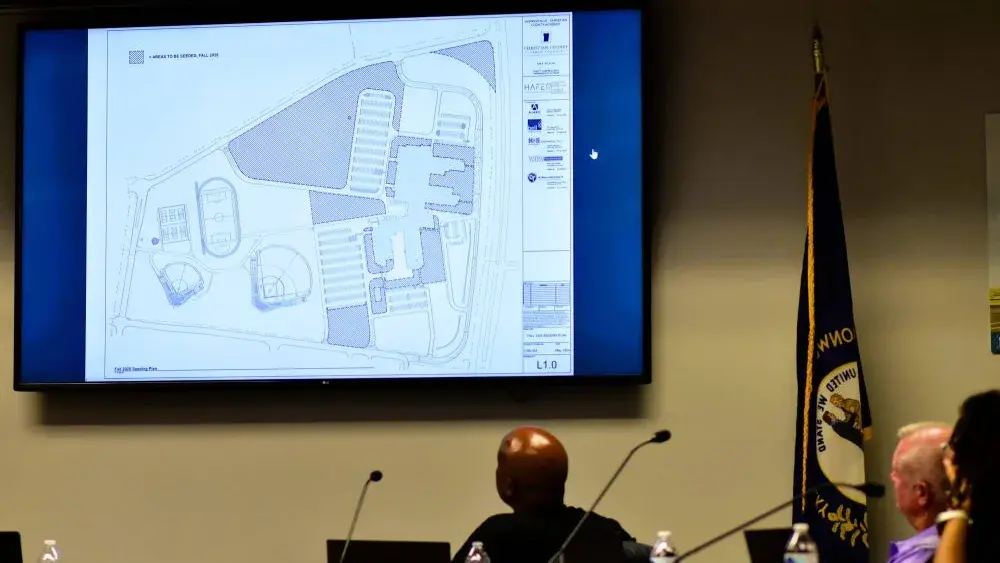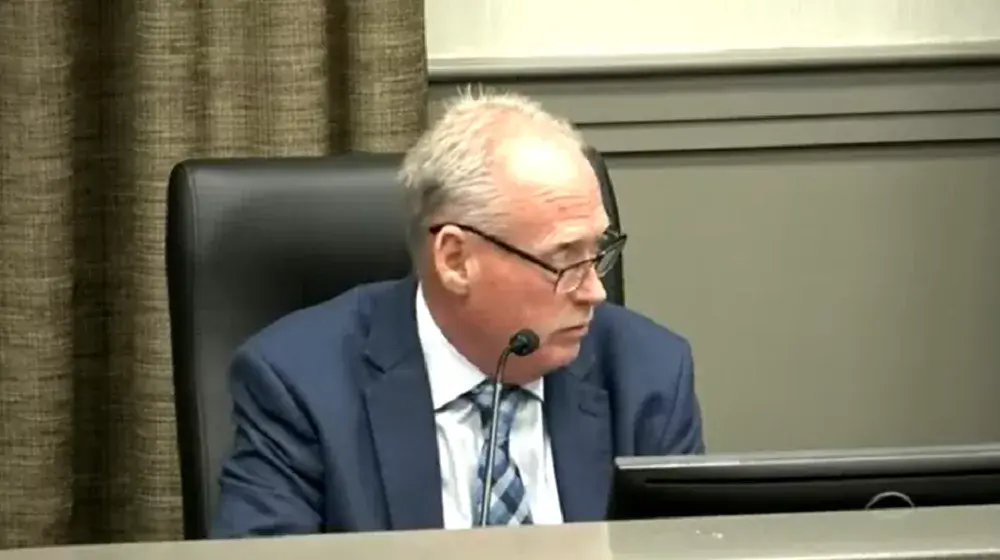
Despite growing and rumbling rumors, Christian County Public Schools and its Board of Education did not increase its tax rates Thursday night.
Instead, under the advisement of the district’s Director of Finance, Jessica Darnell, members unanimously approved a two-cent reduction on real estate — from 41 cents per $100 of assessed value, down to 39 cents — and kept personal property, motor vehicle and utility rates static respectively at 42.1 cents, 56.6 cents and 3%.
Aircraft and watercraft remain exempt.
Last year’s rates, she said, created $20.9 million in school revenue — none of which can legally be used for what is a separate building fund — and, to date, CCPS still maintains the fifth-lowest tax rates in the entire Commonwealth, despite being the state’s second-largest county by size and 12th-largest by population.
With this decision, CCPS leadership has either kept rates the same, or lowered, rates every year since 2018-19, when rates were actually increased from 41.6 cents to 42.8.
In fact, CCPS hasn’t had a tax rate this low since the 2013-14 fiscal and academic year, when it was 39.8 cents.
Darnell confirmed that CCPS has “nothing to do with” local PVA assessments, which saw an increase of more than $600 million year-over-year, or more than 10% in the last 12 months. Those assessments, she added, are done on a rotational basis in the community and vetted through the Kentucky Department of Revenue — which then submits its recommendations back to the district.
Darnell also noted that while a combination of a lower tax rate with a higher property assessment will net the district an extra $1.9 million, the district is set to lose $1.8 million in SEEK funding due to what will now be a heftier 30-cent effort — meaning the district will roughly net an extra $163,000.
Board Attorney Jack Lackey Jr. brought clarity to that, as well.
As for Christian County property owners, Darnell simplified it. Those who haven’t been reassessed as of yet will see average savings of $20 per $100,000 of property value, $40 per $200,000, $200 per $1 million, and so on. Those who have been reassessed, and have seen their property values rise in the last year, will naturally see a slight increase in property tax, depending only on the property’s value change through the PVA — and not because of some district ask, which never came.
In regard to property values, it’s worth noting that neither Hopkinsville, nor Christian County, is immune to what’s actually happening on the national landscape.
Since the onset of the global pandemic, and according to the Case-Shiller U.S. National Home Price Index, residential single-family home values have increased an average 56% in the last five years. According to the All-Property Commercial Index, retail and apartments are up slightly year-over-year and office space is down, yielding a net average increase of 12%. Industrial property, meanwhile, is up an average 44.1% over the same span.
More conservative estimates have residential single-family home values increasing around 45% during this five-year period, but sources indicate that’s still more typical of a decade’s worth of growth — rather than a 60-month crunch.
Local Concerns
***
Full Tax Discussion
By The Numbers
Dawson Springs: 74.7 cents for real estate, 74.7 cents for personal property, 68.7 cents for motor vehicle, 3% utility
Hopkins County: 68.2 cents for real estate, 68.2 cents for personal property, 54.7 cents for motor vehicle, 0% utility
Muhlenberg County: 53.8 cents for real estate, 53.8 cents for personal property, 49.7 cents for motor vehicle, 0% utility
Trigg County: 49.9 cents for real estate, 54.9 cents for personal property, 46 cents for motor vehicle, 3% utility
Todd County: 46.6 cents for real estate, 46.6 cents for personal property, 52.4 cents for motor vehicle, 3% utility
Caldwell County: 44.6 cents for real estate, 44.6 cents for personal property, 53.8 cents for motor vehicle, 3% utility
Why have property values increased so much, at least on the national scale?
1. Ultra-low interest rates & liquidity (2020–2022)
- When COVID-19 hit, the Federal Reserve slashed rates near zero and launched massive bond-buying.
- Mortgage rates dropped below 3% for much of 2020–2021, making borrowing cheaper and dramatically boosting purchasing power.
- Commercial real estate (CRE) benefited too — cheap debt fueled investment, especially in “safe” or high-growth sectors like industrial/logistics and multifamily.
2. Housing supply shortages
- The U.S. already had a structural shortage of millions of homes before 2020.
- Pandemic supply chain disruptions, labor shortages, and rising construction costs made it harder to add new housing.
- Demand surged while supply stayed tight, pushing residential prices up ~56% in five years.
3. Pandemic-driven demand shifts
- Remote work & lifestyle changes: Many households sought larger homes, suburban/rural property, or second homes.
- E-commerce boom: Accelerated need for warehouses and logistics facilities, driving industrial CRE values up ~44%.
- Conversely, office properties struggled, but overall “commercial” indices rose modestly because of strong multifamily and industrial growth.
4. Inflation & real assets
- Post-2021 inflation led investors to seek “hard assets” as hedges.
- Real estate was attractive as an inflation-protected investment, especially with rent growth in multifamily and industrial sectors outpacing CPI.
5. Demographics & demand fundamentals
- Millennials entered peak homebuying years, boosting demand.
- Sun Belt migration and regional growth concentrated price increases in certain metros, lifting national averages.
6. Capital market dynamics
- Abundant global capital chased yield amid ultra-low bond returns, flowing into U.S. real estate.
- Private equity, REITs, and institutional investors bought aggressively, particularly in logistics and multifamily.
In short:
+ Residential prices soared mainly because of cheap mortgages, undersupply, and household demand shifts.
+ Industrial CRE surged because of e-commerce and supply chain reconfiguration.
+ The aggregate commercial market rose more modestly, weighed down by office sector distress.
Sources: ChatGPT, Federal Reserve policy, the National Association of Realtors (NAR) and Freddie Mac, Brookings, Pew Research, and Census Bureau data, CBRE and JLL market outlooks, Bureau of Labor Statistics, reports from NAREIT, Blackstone, and others.





